Salvia clevelandii
Chaparral Sage
A California chaparral native that performs well in desert regions. Foliage has a pleasant, distinctive fragrance when brushed or following rain. Canopy coverage: 20 square feet.
[Read More]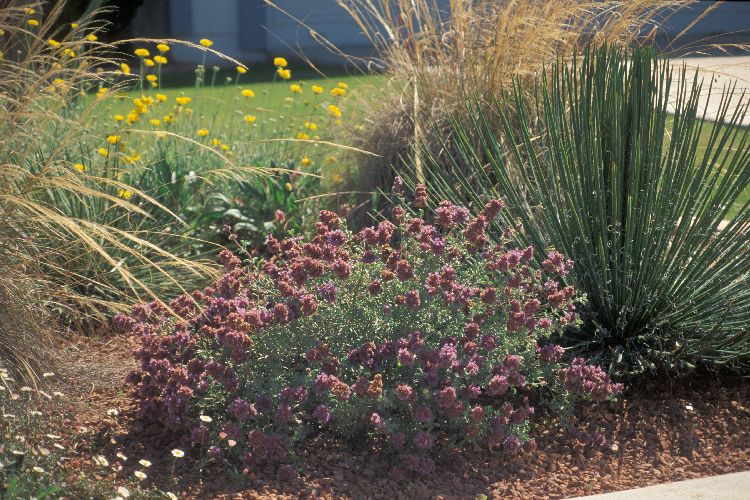
Salvia dorrii var. dorrii
Mojave Desert Sage
Informal growth habit combines well with native subshrubs and perennials in a naturalistic setting. Foliage is aromatic. Canopy coverage: 3 square feet. Photo courtesy Mountain States Wholesale Nursery.
[Read More]Salvia greggii
Autumn Sage
Autumn Sage is a small-scale shrub called a subshrub. It is one of the more forgiving flowering plants for desert regions. Best with some afternoon shade. Many selections are available in a range of flower colors. Canopy coverage: 7 square feet.
[Read More]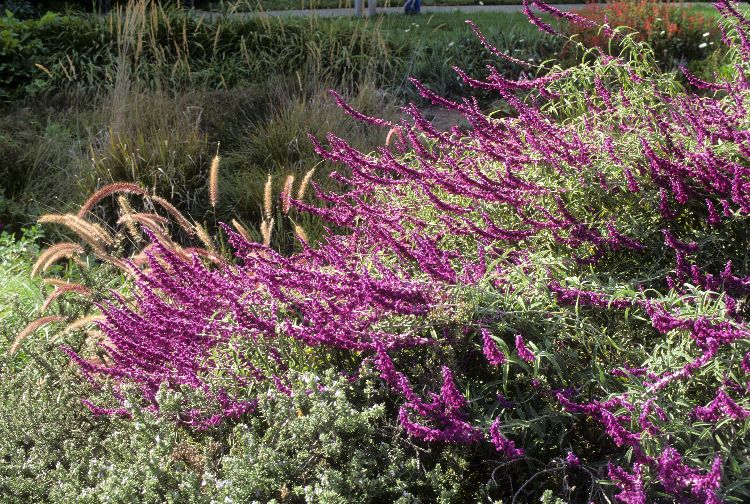
Salvia leucantha
Mexican Bush Sage
The mounding growth habit of Mexican Bush Sage is best in a casual, naturalistic setting. Provide with afternoon shade. Flowers are striking, velvety purple spikes that rise above the foliage. Canopy coverage: 13 square feet.
[Read More]Salvia mellifera
Black Sage, Honey Sage
Black Sage is a common California native with a growth habit that can be upright to spreading. Plants can sometimes grow larger than the 5 x 5 feet noted if provided ideal conditions. Leaves are dark green above, grayish beneath, and are highly fragrant. Accepts almost any soil. Canopy coverage: 20 square feet.
[Read More]Sambucus mexicana
Mexican Elderberry
Leaf drop usually occurs in late summer and can be more complete with drought. Not refined in appearance, so avoid using close up to outdoor areas. Berries attract birds and can also be made into jelly or wine. Canopy coverage: 314 square feet.
[Read More]Sambucus nigra
Black American Elder
Black American Elder is grown as a shrub or tree, with fragrant flowers in clusters blooming late spring to early summer. Black berries follow in late summer. Canopy coverage: 314 square feet.
[Read More]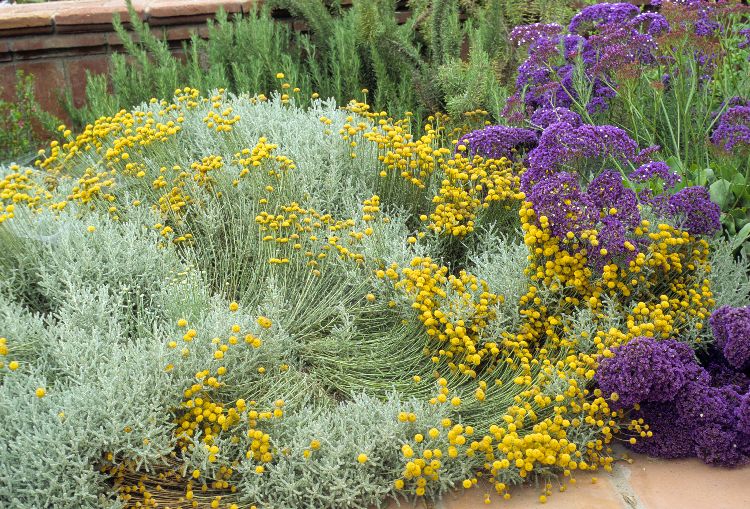
Santolina chamaecyparis
Lavender Cotton
Lavender Cotton is a reliable small shrub or groundcover that lends its silvery gray leaves as bright contrast to green-foliaged plants. Its leaves are aromatic. Plantings are easy to control; keep neat by trimming away spent flower stems. Canopy coverage: 13 square feet.
[Read More]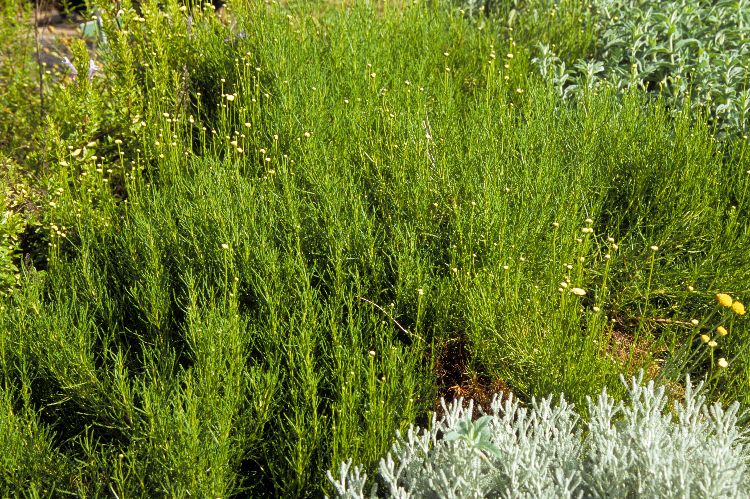
Santolina virens
Green Santolina
Presents a refined form with clusters of bright yellow button-shaped flowers. Also makes an excellent groundcover. Often combined with Lavender Cotton. Canopy coverage: 28 square feet.
[Read More]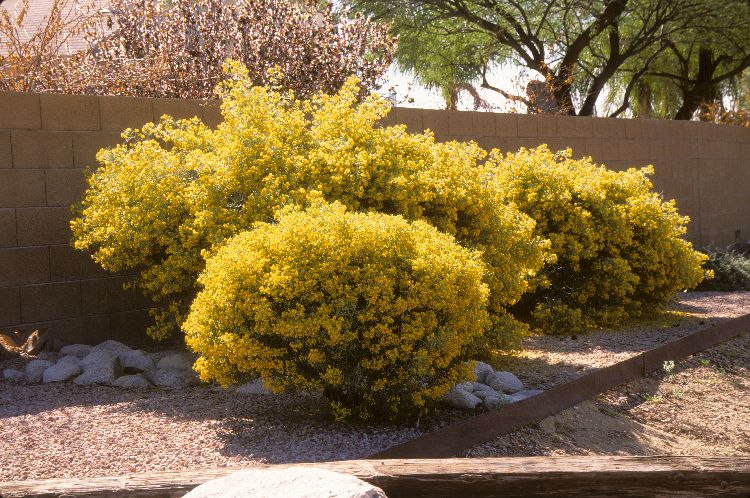
Senna artemisioides
Feathery Senna
Bright yellow flowers provide welcome color in early spring, although blooming periods can be variable. Foliage is distinctively feathery, and plant holds its refined form well following bloom. Canopy coverage: 28 square feet.
[Read More]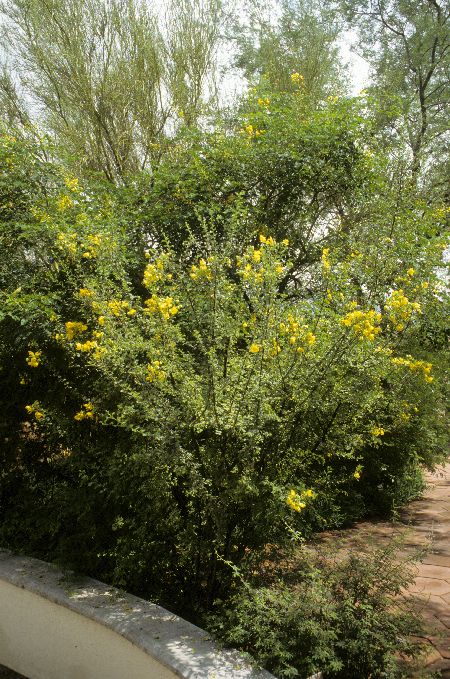
Senna wislizenii
Shrubby Senna
Shrubby Senna has an upright, rounded growth habit. Bright yellow flowers bloom in clusters during summer. Canopy coverage: 50 square feet.
[Read More]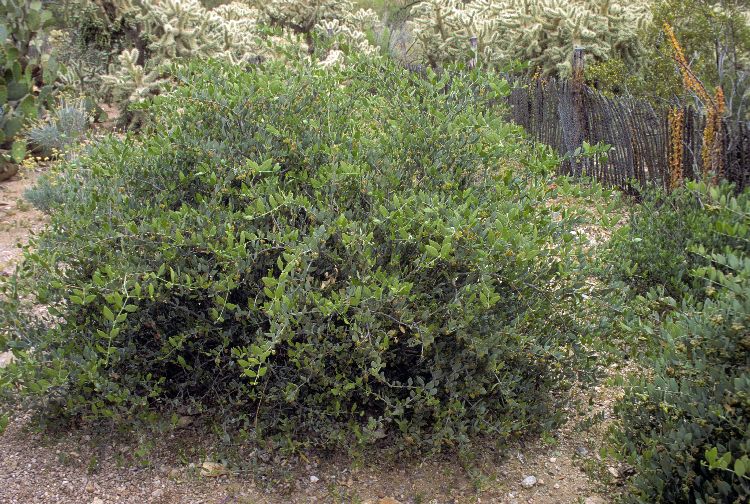
Simmondsia chinensis
Jojoba
Jojoba is a native shrub that is well-suited to desert landscapes, accepting the toughest conditions. Female plants produce acorns that are highly valued for their oil. Canopy coverage: 50 square feet.
[Read More]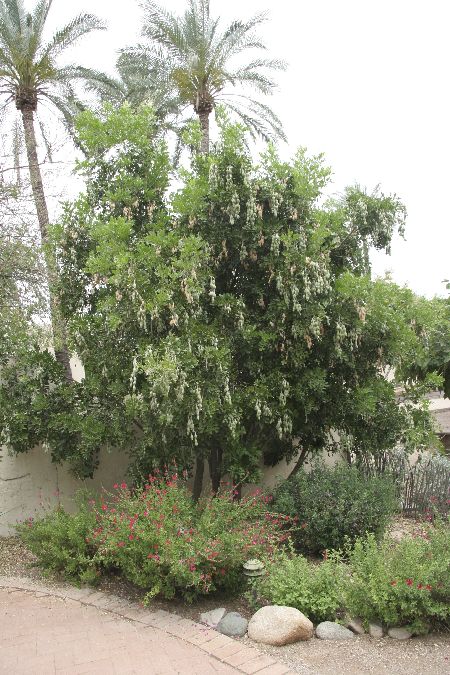
Sophora secundiflora
Texas Mountain Laurel
This is a quality small tree or shrub with many desirable features. Fragrant, wisteria-like flowers are followed by interesting silvery bean pods. Canopy coverage: 177 square feet.
[Read More]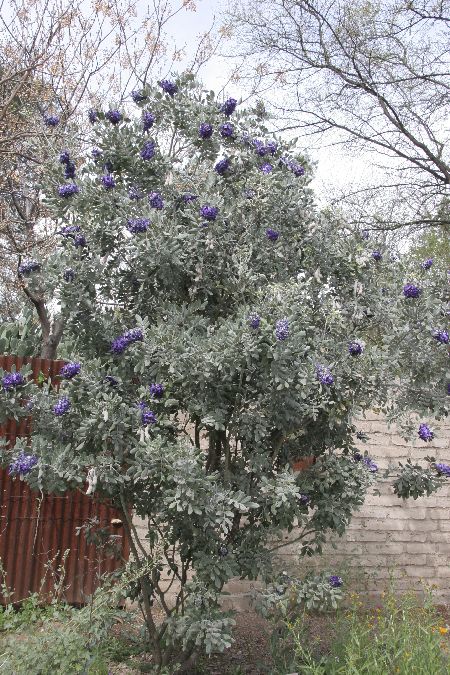
Sophora secundiflora 'Silver Peso'
Silver Peso Mountain Laurel
Very similar tree as the species, Sophora secundiflora, but leaves are a distinctive silvery color. Grow as a small tree or shrub. Fragrant, wisteria-like flowers are followed by interesting silvery bean pods. Canopy coverage: 177 square feet.
[Read More]Spiraea x vanhouttei
Vanhoutte Spirea
This popular Spirea hybrid grows as a large, wide-spreading shrub with fountainlike branches that drape and trail. Flowers in clusters bloom spring into summer. 'Renaissance' is an improved selection. Canopy coverage: 28 square feet.
[Read More]Spiraea japonica
Japanese Spirea
Many selections of Spirea are available and are typically a little smaller than the species. Select from a wide range of flower colors; they bloom in large flat clusters during summer and into fall. Canopy coverage: 28 square feet.
[Read More]Spiraea x bumalda
Bumald Spirea
This Spirea is sold under a couple of different names, including Spiraea japonica 'Bumalda'. It is an attractive, dense, low-growing shrub with masses of flower clusters in late spring and summer. Accepts some shade but foliage may not be as brightly colored. Prune spent flowers to extend the bloom season. Canopy coverage: 14 square feet.
[Read More]Symphoricarpos orbiculatus
Red Coralberry
Red Coralberry is a medium-sized, upright shrub. it is valued for its flowers and coral-red berries that remain on the branches in fall and winter. Leaves turn a reddish color in fall as well. Accepts most soils, even poor soil, as long as it is well drained. Canopy coverage: 50 square feet.
[Read More]Syringa vulgaris
Common Purple Lilac
The species of this plant produces purple flowers, but many, many selections of Lilac in a wide range of flower colors are available. Check at your local nursery. Grows in an upright, vase shape, and is often used as an informal barrier or background plant. Flowers are fragrant and bloom in large clusters. Canopy coverage: 113 square feet.
[Read More]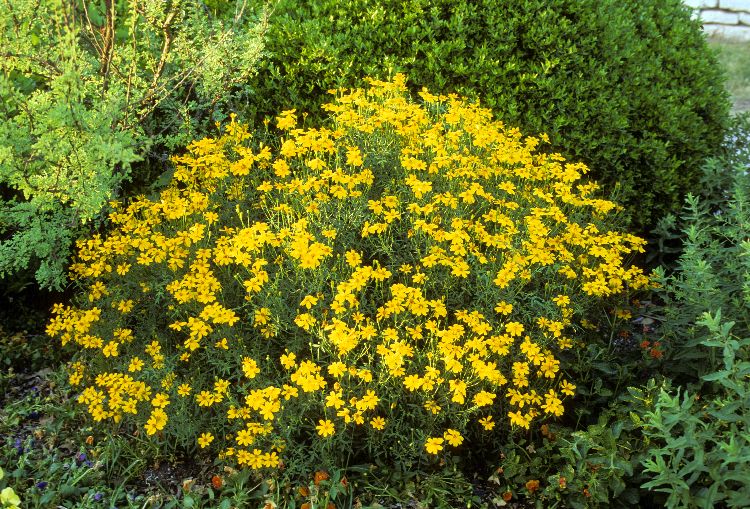
Tagetes lemmonii
Mountain Marigold
Mountain Marigold is shrublike in form. Leaves are aromatic when brushed. It is a tough plant that does well in extreme heat. Canopy coverage: 20 square feet.
[Read More]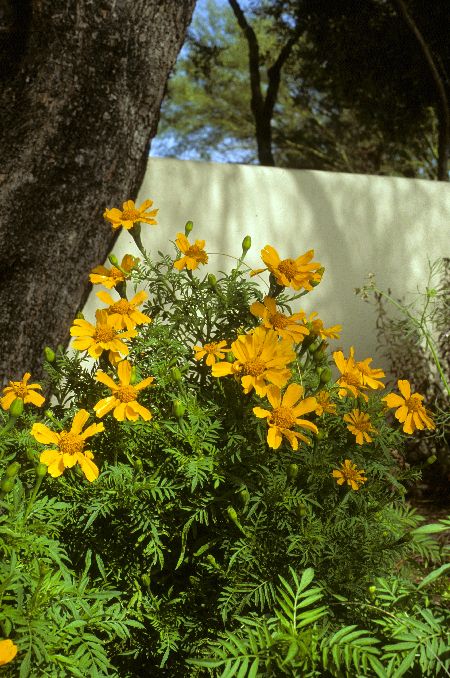
Tagetes lucida
Licorice Marigold
The common name Licorice Marigold is due to the fact that leaves emit a fragrance similar to anise. Appearance is similar to its cousin, Mountain Marigold, but growth is more compact. Canopy coverage: 13 square feet.
[Read More]